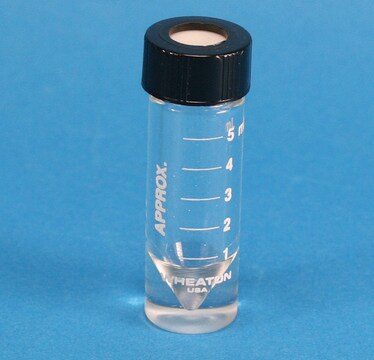43011
L-Histidine hydrochloride solution
100 mM amino acid in 0.1 M HCl, analytical standard
Synonym(s):
L-Histidine monohydrochloride solution
About This Item
Recommended Products
grade
analytical standard
Quality Level
form
liquid
analyte chemical class(es)
amino acids, peptides, proteins
concentration
100 mM amino acid in 0.1 M HCl
technique(s)
HPLC: suitable
gas chromatography (GC): suitable
color
colorless
application(s)
food and beverages
format
single component solution
storage temp.
2-8°C
SMILES string
Cl.N[C@@H](Cc1c[nH]cn1)C(O)=O
InChI
1S/C6H9N3O2.ClH/c7-5(6(10)11)1-4-2-8-3-9-4;/h2-3,5H,1,7H2,(H,8,9)(H,10,11);1H/t5-;/m0./s1
InChI key
QZNNVYOVQUKYSC-JEDNCBNOSA-N
Related Categories
General description
Application
Signal Word
Warning
Hazard Statements
Precautionary Statements
Hazard Classifications
Met. Corr. 1
Storage Class Code
8B - Non-combustible corrosive hazardous materials
WGK
nwg
Flash Point(F)
Not applicable
Flash Point(C)
Not applicable
Personal Protective Equipment
Regulatory Listings
Regulatory Listings are mainly provided for chemical products. Only limited information can be provided here for non-chemical products. No entry means none of the components are listed. It is the user’s obligation to ensure the safe and legal use of the product.
ISHL Indicated Name
Substances Subject to be Indicated Names
ISHL Notified Names
Substances Subject to be Notified Names
JAN Code
43011-5ML-F:4548173962658
43011-VAR-F:
43011-BULK-F:
Choose from one of the most recent versions:
Certificates of Analysis (COA)
Don't see the Right Version?
If you require a particular version, you can look up a specific certificate by the Lot or Batch number.
Already Own This Product?
Find documentation for the products that you have recently purchased in the Document Library.
Customers Also Viewed
Our team of scientists has experience in all areas of research including Life Science, Material Science, Chemical Synthesis, Chromatography, Analytical and many others.
Contact Technical Service







